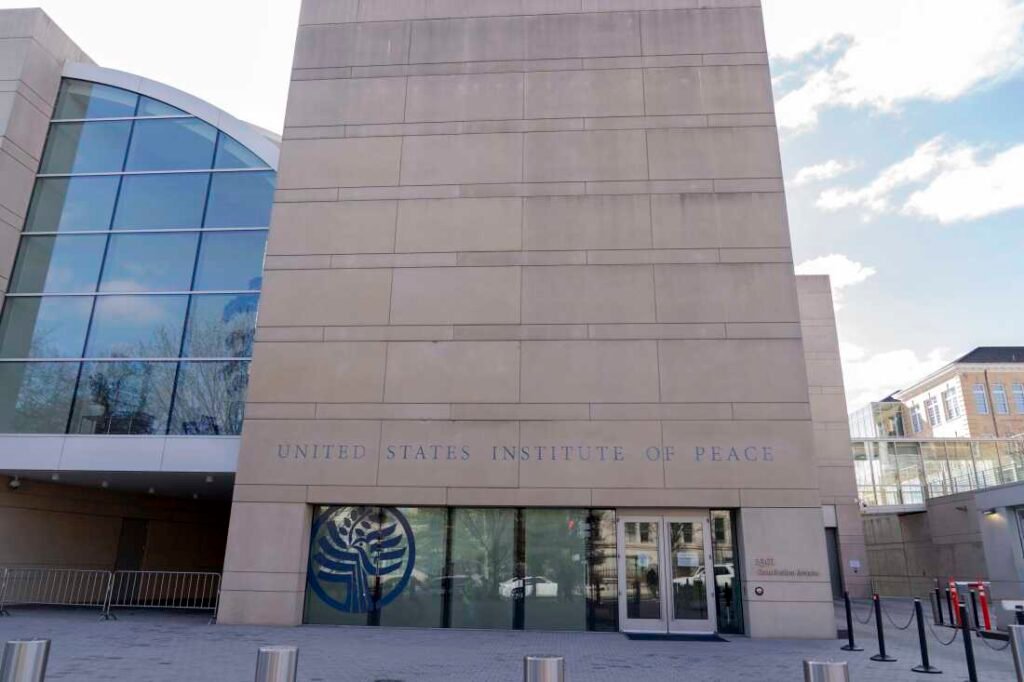In March 2025, the U.S. Institute of Peace (USIP), a symbol of conflict resolution, became the center of a heated confrontation. This “Showdown at the Institute of Peace” unfolded as the Department of Government Efficiency (DOGE), led by Elon Musk, sought to implement an executive order from President Donald Trump to dismantle the institute. The ensuing events raised critical questions about executive power, the autonomy of congressionally established entities, and the future of U.S. diplomacy.
The Genesis of the Conflict
Established by Congress in 1984, the USIP’s mission has been to prevent and resolve international conflicts through research, training, and policy engagement. Its creation was a response to the Cold War’s nuclear tensions, embodying America’s commitment to peaceful conflict resolution. However, in February 2025, President Trump issued an executive order targeting the USIP and similar organizations for closure, labeling them “unnecessary” and part of a broader effort to reduce federal expenditures.
The Standoff Unfolds
Tensions escalated on March 17, 2025, when DOGE officials, accompanied by law enforcement, attempted to enter the USIP headquarters in Washington, D.C. The institute’s leadership, including acting president George Moose, resisted, arguing that the executive order did not apply to their congressionally funded nonprofit. Despite their objections, DOGE personnel gained access to the building, leading to a dramatic standoff.
Reports indicate that Moose and his team barricaded themselves inside, disabling office utilities such as Wi-Fi, telephones, and elevators to hinder DOGE’s takeover efforts. Law enforcement eventually escorted the institute’s staff out of the building, but not without controversy. Judge Beryl Howell criticized DOGE’s forceful entry, questioning the necessity of using armed law enforcement to achieve their objectives.

Legal Battles and Constitutional Questions
In response to the takeover, the USIP filed a lawsuit against the Trump administration, DOGE, and key officials, alleging that the dismantling of their nonprofit was illegal. The lawsuit contends that as a congressionally funded entity, the USIP operates independently of executive orders aimed at federal agencies. This legal challenge underscores a broader debate about the extent of presidential power over organizations established by Congress.
Judge Howell’s remarks during the court proceedings highlighted the tension between the executive branch’s actions and legal boundaries. She questioned whether DOGE could achieve its goals “without using the force of guns and threats… against American citizens,” reflecting concerns about the administration’s aggressive approach to restructuring government agencies.
Broader Implications for U.S. Diplomacy
The confrontation at the USIP is part of a larger pattern of the Trump administration’s efforts to overhaul federal agencies and reduce foreign aid. Other organizations, such as the National Endowment for Democracy and USAID, have faced similar challenges, including funding freezes and directives to downsize. Critics argue that these actions undermine America’s soft power and its ability to promote peace and democracy globally.
The aggressive tactics employed by DOGE, including the use of law enforcement to seize control of the USIP, have sparked debate about the balance of power between the executive branch and congressionally established entities. Legal experts and policymakers are closely watching the outcome of the USIP’s lawsuit, as it may set a precedent for the autonomy of similar organizations in the future.
The Role of Law Enforcement
The involvement of Washington, D.C., police in the standoff has also come under scrutiny. Officers were called to the scene over reports of unlawful entry but ultimately facilitated DOGE’s access to the building. This decision has raised questions about the role of local law enforcement in federal disputes and the pressures they face when navigating complex jurisdictional issues.
Conclusion
The “Showdown at the Institute of Peace” serves as a stark illustration of the current administration’s determination to reshape the federal landscape, even at the expense of longstanding institutions dedicated to conflict resolution and diplomacy. As legal proceedings unfold, the nation watches closely, aware that the outcome may redefine the boundaries of executive power and the future of American diplomatic engagement.
Sherrod Brown Workers Group: Advocating for Ohio’s Workforce





